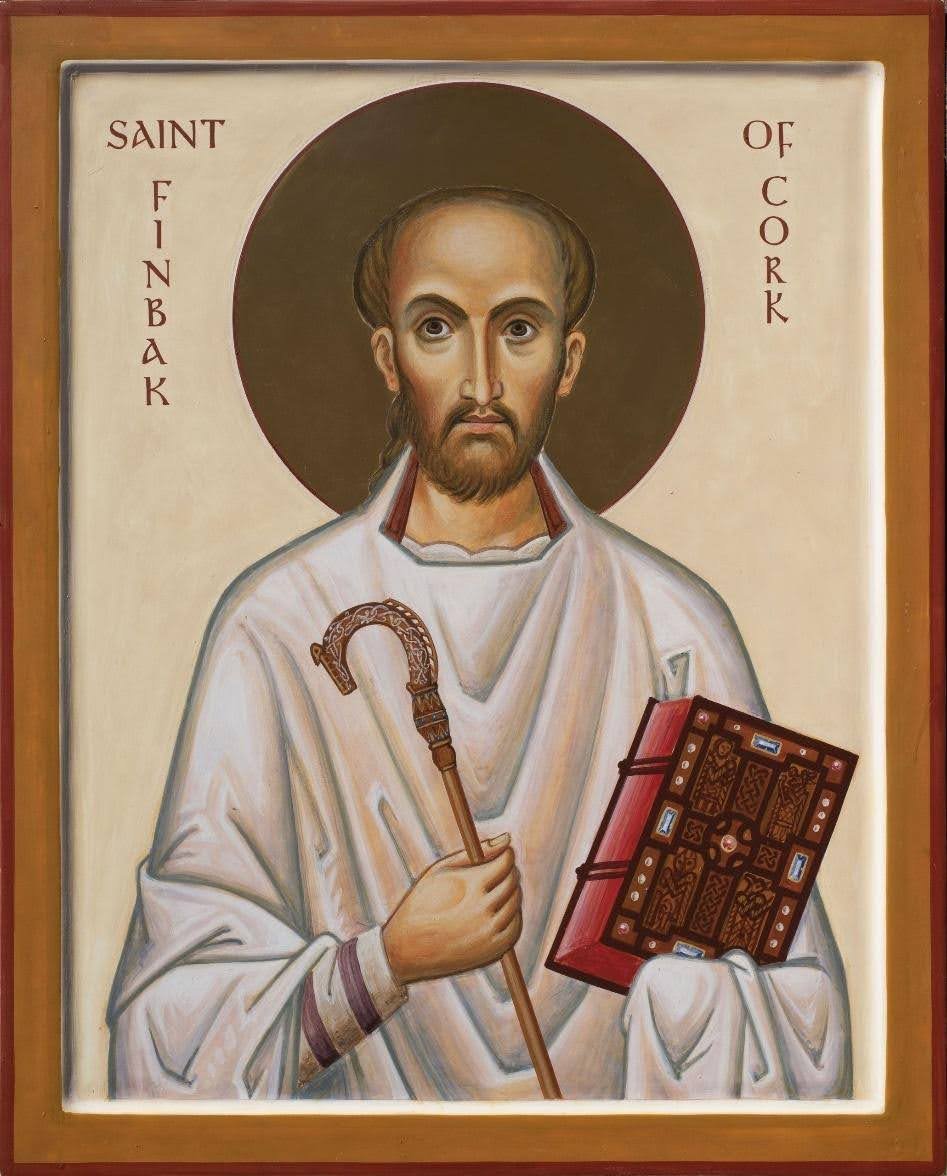St. Finbar: Irish Monk, Scholar, and Bishop
c 550AD – 25 September, 623AD
Feast Day – September 25th
Patron Saint of Cork, Ireland
St. Finbar, also known as Bairre or Barrocus, was born around the year 550 in Connaught, Ireland, to Amergin, an artisan, and a lady of the Irish royal court. He was educated at Kilmacahil monastery in Kilkenny, Ireland. He was known for his distinctive feature, very light hair, which earned him the nickname Fionnbharr, meaning "white hair." Saint Finbar preached extensively in southern Ireland, and there are also accounts that suggest that he may have preached in Scotland. Seeking a more solitary life, Saint Finbar became a hermit on a small island at Lough Eiroe and later at Gougane Barra. During this time, he also founded a school at Eirce, Ireland, where he imparted knowledge and spiritual guidance to his disciples. One of his notable achievements was the founding of a monastery on the river Lee, which eventually developed into the city of Cork, Ireland. Saint Finbar served as the first bishop of Cork, further establishing and nurturing the faith in the region. Throughout his life, Saint Finbar was known for his holiness and devotion to God. Numerous extravagant miracles were attributed to him, demonstrating his close relationship with the divine. Legend states that after his death on September 25, 623, the sun did not set for two weeks, a testament to the impact he had on his community. He is considered the patron saint of Cork, Ireland, and is also recognized as a patron of the diocese of Cork. Saint Finbar's life and legacy continue to inspire and guide believers in their faith journey. His dedication to spiritual enlightenment, his founding of significant institutions, and his extraordinary life of holiness have earned him a place among the revered saints of the Catholic Church.
St. Finbar’s Charleston Connection
The first Bishop of the Roman Catholic Diocese of Charleston, Bishop John England (of County Cork, Ireland), originally conceived of the Diocesan Cathedral, and in 1821 he purchased the site of a garden in Charleston called “New Vauxhall”. A house was on the lot, and on December 30, 1821, Bishop England blessed it as a temporary chapel and named it in honor of St. Finbar, the patron saint of Cork.
The cornerstone for the original cathedral was in 1850 near the corner of Broad and Friend, the current Cathedral’s location. Architect Patrick Keely was hired to construct the new cathedral. He intended the building to be 156 feet long, 72 feet wide, 54 feet high and made out of Connecticut sandstone. The completion of the original cathedral in 1854 was followed by the devastating fire of 1861 that destroyed this original structure. The Cathedral that stands today, while no longer bears the name of St. Finbar, will forever link him to Charleston, Bishop England, and the Charleston Cathedral, and we honor this Saint of the Catholic Church and we honor him with his naming of the Chesterton Academy of St. Finbar, Charleston, SC.
And a final St. Finbar fun fact - the word ‘Cork’ originates from the Irish word ‘Corcaigh’ which means ‘Marsh’…a very appropriate connection to our low country location!

